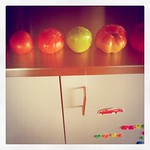 We have been growing vegetables for some years already, but in the winter of 2010 I decided to take things up a nudge. Inspired by a recent trip to California, where I had visited my old friends Ruby and Rachel and their respective Urban/Suburban Homesteads, I decided that I wanted to try this as well. Here in Bern, Switzerland, right smack in the middle of the city, I wanted to start an Urban Farm with the intention of getting as close to Self-sufficiency as possible. My declared goal was to produce 80% of our food within three years. Yes, that is quite an ambitious goal, but hey … My work situation was/is so dire, that I could use with a little ambition, it could help not to sink too deep into depression.
We have been growing vegetables for some years already, but in the winter of 2010 I decided to take things up a nudge. Inspired by a recent trip to California, where I had visited my old friends Ruby and Rachel and their respective Urban/Suburban Homesteads, I decided that I wanted to try this as well. Here in Bern, Switzerland, right smack in the middle of the city, I wanted to start an Urban Farm with the intention of getting as close to Self-sufficiency as possible. My declared goal was to produce 80% of our food within three years. Yes, that is quite an ambitious goal, but hey … My work situation was/is so dire, that I could use with a little ambition, it could help not to sink too deep into depression.
My Gardening Background
Now would be the time to admit that I am not a natural gardener. I neither have what is commonly called a green thumb. I also worry a lot and have the silly tendency to water things way too much. When the harsh summer storms come I freak out watching the plants on our balcony getting whipped about. Nor do I really enjoy most of the work that gardening entails. Gardening work is either tedious, like weeding, repetitive harvesting, preparing the food to conserve it, or it is physically harsh, and I do have a rather weak back … But hey. This is it now my job. And so that’s nothing new either, I always hated my work. I am a natural born slacker.
I started gardening in the mid 80s. My first urban gardening project was in the late 80s with some friends in San Francisco, when we started a vegetable garden in their back yard (incidentally at Ruby’s house). I then went to live on an organic vegetable farm in northern California for half a year to learn the deep dig or double dig method from a radical fairy (google it! in short, gay hippies with a penchant for paganism and drug rituals). This guy to this day is my gardening guru. Once a year he asked to be dug into a garden bed while he was tripping on exstacy. During this time I also studied Herbalism with David Hoffman and started to get interested in permaculture. Back in Europe mid to late 90s we started to look for a rural home to start a permaculture garden. We kept looking for years, but no such luck. In Switzerland rural areas are extremely conservative, so we finally decided to start an allotment garden in the city and to stay urban. But this to me is but a compromise, I remain convinced of the permaculture gardening principles, but to implement them you need a house. For us to find a home in a rural or suburban setting is no longer an option, in the urban setting single houses are rare and very expensive. So allotment/balcony gardening is what we are stuck with. And Self-sufficient urban plot farming was the logical continuation.
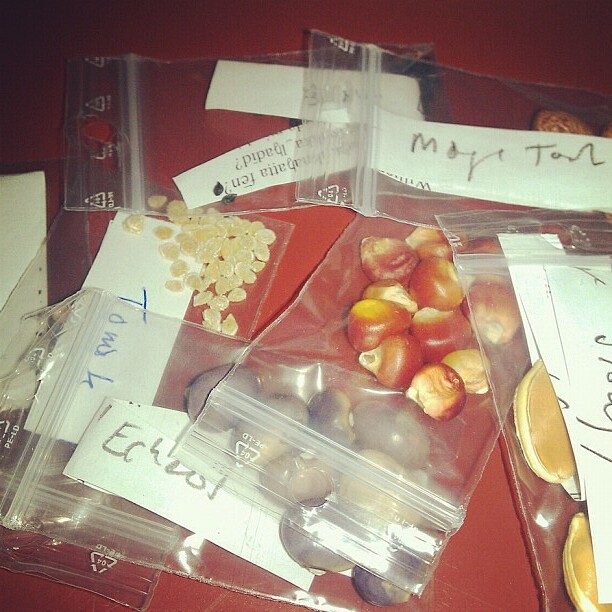
Year One
I just passed the half way point of this three year experiment, so I thought it would be a good time to look at how things are going. The first year was dedicated mostly to vegetables, to get our plot more organized, to design the three year plan and to sort storage and conservation of the food. My wife started with the bees.
Our garden plot really rocks. It has a realistic size (150 m2), that can easily produce enough food for the two of us. The soil is in decent shape, we have improved it for the previous 4 years already, there are berries (red currants, raspberries, blackberries), a very nice elder tree, plus we have vines and a small pond on the southern edge. We pay the city 250.- per year for it.
The main issue I had for the first year of the experiment was transport. We had moved to an apartment 5.6 km away from our allotment and I didn’t have a car anymore, which meant I had to ride my bike back and forth, and sometimes use the bike trailer to transport some of the bulkier things. A few times I had to burrow a car. During the 8 relevant months (march – october) I rode to the garden and back 6 times a week, that’s 8 x 4 x 6 x 11.2 km = 2150.4 km in bike rides. It was probably more, since I already started in february and kept going til november and december. let’s just agree it was 2300 km in bike rides ;p. I didn’t mind the rides too much, it was great excerice as well, but it did take up a lot of time.
We tried to split things in a logical way, so we might not have to visit the garden too often – I still ended up going almost every day. In garden plot we planted root vegetables, corn, zucchini, squashes, beans, peas, leafy greens, salads. On our very hot south-west facing balcony we kept the more work intensive vegetables, that grow in pots, so we had tomatoes, eggplants, chilis, and kitchen herbs. This setup worked well, but if the allotment is as far away as ours, it takes a lot of planing with the harvest.
We did produce a lot of food, we even had to give away some of it. The food conservation went well; we filled our freezer with corn, beans, peas, fruit and berries. We fermented kimchi, sauerkraut, pickles; cooked jams, sirups; made tinctures, oils. We dried tomatoes, squash, beans. we even cooked 10 quart glasses of tomato sauce, that lasted quite a while into the winter. And of course we stored our pride and joy, fifteen huge Butternut Squashes, in the cellar. Sadly, that cellar was way too warm, so squash was just about the only thing that we were able to store. I am currently researching a method to store food outside directly in the ground, an old method, that was wildly used in our region to store carrots and all sorts or root vegetables. Basically they used to dig a hole in the dirt lined it with sand and straw and stacked the roots in there.
Year Two
The second year I had planned to start with the animals. I wanted to get quails or find a communal chicken coop for eggs. I also hoped to start a project tentatively named Cow Sharing. The idea was to find a farmer, and together with a few other families lease a cow from him. We would pay a certain amount in money or barter, but we would also help with the work, say once a week, and in exchange receive some milk. This year I also wanted to network more with other urban farming projects in Bern and in Switzerland.
But most these goals proved to be too ambitious for this year. During the Winter I had a particularly bad spell of depression, that I am still struggling to creep out of. Last year we were not happy where we lived, so we moved house in November 2011. But the first place we moved to was totally unacceptable, so we had to move again only three months later. This took up a lot of our energy and sadly it was all in vain, because for different reasons we are again very unhappy with our current place.
The one thing that did work well so far this year was the networking, I got involved with an urban gardening project in Lorraine, and helped to organize a seedling exchange and a seed bank. Our current home is also much closer to the allotment – only 2 km. So going back and forth is much less draining. However I now often go twice a day, because of course fruit and berries taste so much better when harvested in the evening.
Our garden took more time to get started, we had trouble with the early things, like peas and carrots. For a long time we could only harvest our huge salads. Then the fava beans, peas, some leafy greens. And now finally the garden is starting to explode. I already made plenty of jams and sirups. A few days ago we ate our first tomatoes. And yes, i have a new plant crush, with the eggplant, such a pretty beast.
Half Time
I can already tell that my goal to produce 80% of our food is way too ambitious. The vegetables are the easy part, but eggs and dairy could be much harder than I originally anticipated. I also realize that one of my goals for year three was a little unrealistic, where I wanted to get started on grains and oils. I now think a realistic goal is to produce pretty much all of the fruit and vegetables, except of course a few foodie things, like avocados, citrus, bananas, that do not grow here. To produce our own honey should also be possible. Eggs and dairy will be trickier, maybe some bartering or a work exchange arrangement could be an option. I was naive and very optimistic when I placed the bar so high. But hey, gotta try or die trying, innit?
I am still hoping we can find a house with some people and finally start on our permaculture garden. That will make many things so much easier.

Goals
– Move more and more towards permaculture
– Explore more fermentation processes, like kombucha, miso, yogurth, kefir. I really love and highly recommend the books by Sandor Ellix Katz
– Keep our own quails or find a communal chicken coop.
– Start a Cow Share or work exchange for milk
– Get the bees closer to our house
– Find more and more spots for wild food: mushrooms, herbs, greens, fruit, berries
– Create an online foraging resource for public fruit trees that people can harvest, equal to http://www.fallenfruit.org/
– Fix our cellar storage situation
– Find a Green house to share, or build one
– Start a harvest table, where gardeners can donate their excessive harvest so people in need can come pick up

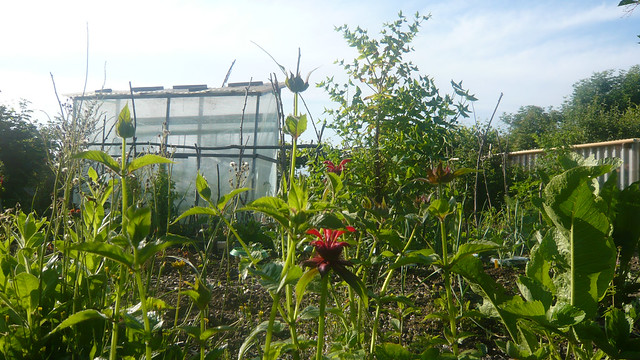
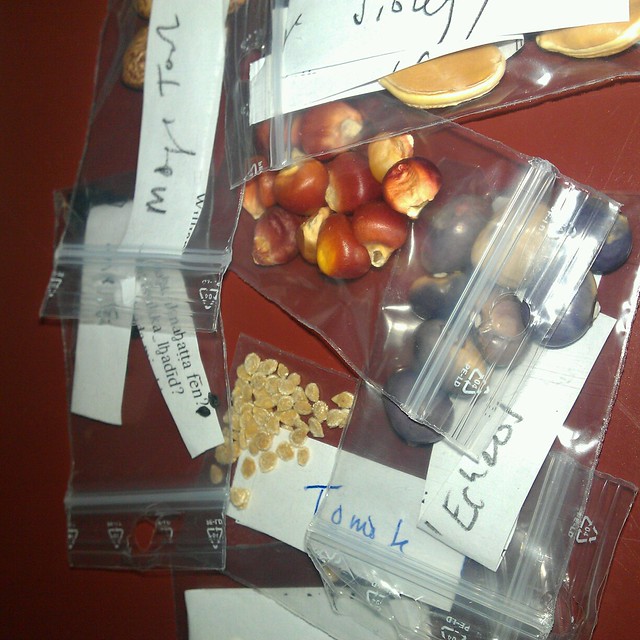
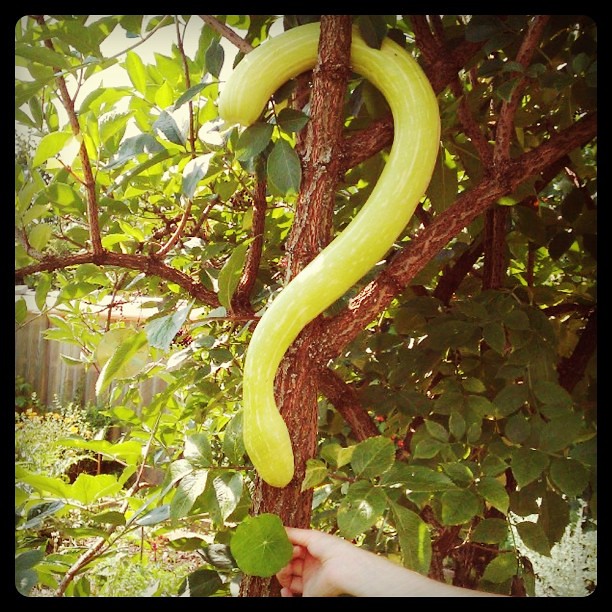

I collected the first honey from the bees just yesterday. Its really amazing and looks like liquid gold:
http://web.stagram.com/p/245438595048224207_805332
http://web.stagram.com/p/245440900992677341_805332
Not only would it be more practical to have them closer to where i live – the main reason to move them into the city would be that bees do better in an urban environment where there is a rich diversity of plants, flowers and trees throughout the year, compared to the monocultures in rural areas that leave them starving most of the time.
They say that the best honey in France comes from the Paris rooftops…